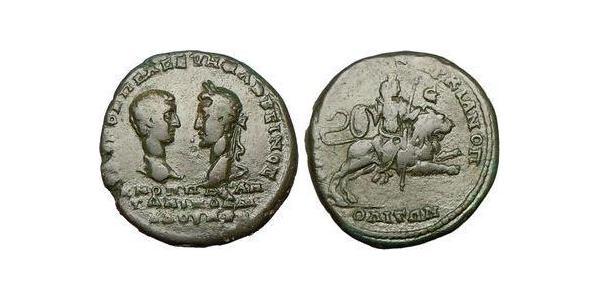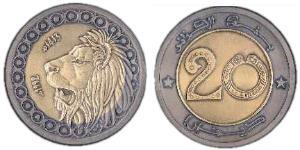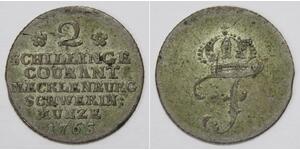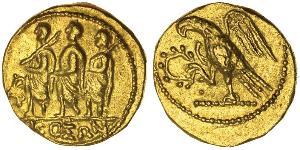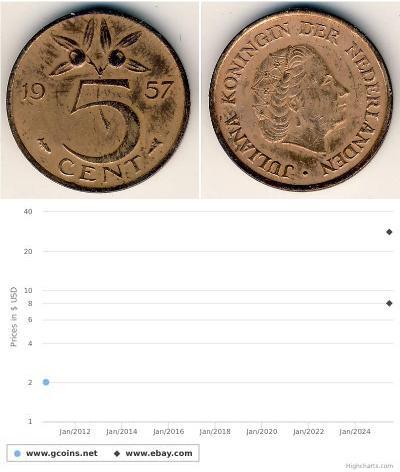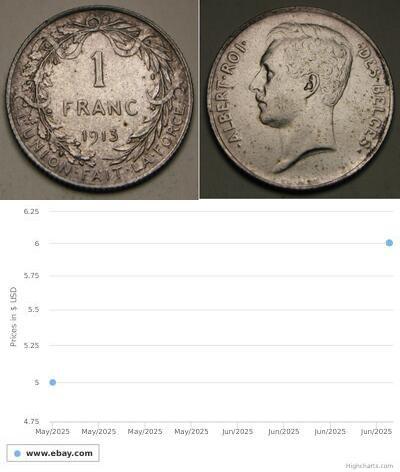[ 2833] Macrinus, 217-218 A.D. Macrinus & Diadumenian Bronze 5 Assaria (28mm, 13.00 gm), Markianopolis under Legate Furius Pontianus, 217A.D. RARE. Reference: Pick 757; BMC Thrace pg.33, 38; Mionnet Supp. II pg.88, 203. AVT K OΠΠEΛ CEVH MAKPEINOC K M OΠΠEΛ ANTΩNINOC ΔIAΔOVME, bust of Macrinus, laureate facing bare-headed bust of Diadumenian. VΠ ΠONTIANOV MAPKIANOPOΛITΩN, Kybele, veiled and turreted, seated facing on a lion leaping to right, she i holding a tympanum and long sceptre. Provided with certificate of authenticity. CERTIFIED AUTHENTIC by Sergey Nechayev, PhD - Numismatic Expert Cybele (Phrygian: Matar Kubileya/Kubeleya "Kubeleyan Mother", perhaps "Mountain Mother"; Lydian Kuvava; Greek: Κυβέλη Kybele, Κυβήβη Kybebe, Κύβελις Kybelis), was the Phrygian deification of the Earth Mother. As with Greek Gaia (the "Earth"), or her Minoan equivalent Rhea, Cybele embodies the fertile Earth, a goddess of caverns and mountains, walls and fortresses, nature, wild animals (especially lions and bees). Phrygian Cybele is often identified with the Hittite-Hurrian goddess Hebat, though this latter deity might have been the origin of only Anatolian Kubaba. The Greeks frequently conflated the two names, the Anatolian "Kubaba" and the Phrygian "Kybele", to refer to the Phrygian deity. Cybele is also sometimes spelled Sybil. Cybele, or Sybil, is a title like Priest or Rabbi, associated with an 'office' or 'position' like President or Dean. Cybeles often have particular talents or skills which have been developed which make them suitable, and sometimes famous, for the work or service they provide. Greek mythographers recalled that Broteas, the son of Tantalus, was the first to carve the Great Mother's image into a rock-face. At the time of Pausanias (2nd century CE), a sculpture carved into the rock-face of a spur of Mount Sipylus was still held sacred by the Magnesians. At Pessinos in Phrygia, an archaic image of Cybele had been venerated as well as the cult of Agdistis, in 203 BCE its aniconic cult object was removed to Rome. Her cult had already been adopted in 5th century BCE Greece, where she is often referred to euphemistically as Meter Theon Idaia ("Mother of the Gods, from Mount Ida") rather than by name. Mentions of Cybele's worship are found in Pindar and Euripides, among other locations. Classical Greek writers, however, either did not know of or did not mention the castrated galli, although they did mention the castration of Attis. Cybele's cult in Greece was closely associated with, and apparently resembled, the later cult of Dionysus, whom Cybele is said to have initiated and cured of Hera's madness. They also identified Cybele with the Mother of the Gods Rhea. Anatolian Cybele The figurine found at Çatalhöyük, (Archaeological Museum, Ankara), dating about 6000 BCE, is generally conceded to depict a corpulent and fertile Mother Goddess in the process of giving birth while seated on her throne, which has two hand rests in the form of feline (leopard or panther) heads. The similarity to later iconography of the Anatolian Mother Goddess is striking. By the 2nd millennium BCE the Kubaba of Bronze Age Carchemish was known to the Hittites and Hurrians: "[O]n the basis of inscriptional and iconographical evidence it is possible to trace the diffusion of her cult in the early Iron Age; the cult reached the Phrygians in inner Anatolia, where it took on special significance" (Burkert, III.3.4, p. 177). If the theory on the Luwian origin of Cybele's name is correct, Kubaba must have merged with the various matar goddesses well before time the Phrygian matar kubileya inscription was made around the first half of the 6th century BCE (Vassileva 2001). In Phrygia Rhea-Cybele was venerated as Agdistis, with a temple at the great trading city Pessinos, mentioned by the geographer Strabo. It was at Pessinos that her lover Attis (son ...
voir plus
Similar Coin Groups
2025-05-24
- Historical Coin Prices
2025-05-27
- Historical Coin Prices
Vous pourriez être intéressé par...

